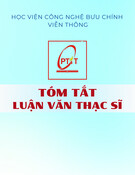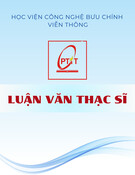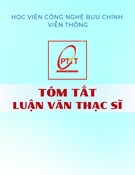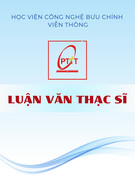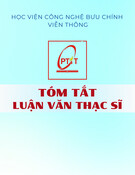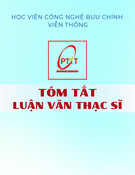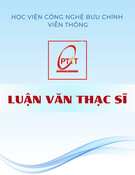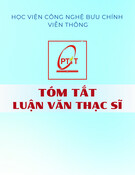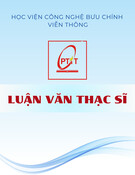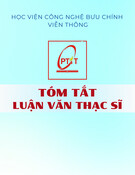
MISNISTRY OF
EDUCATION AND TRAINING
VIETNAM ACADEMIY OF
SCIENCE AND TECHNOLOGY
GRADUATE UNIVERSITY OF SCIENCE AND TECHNOLOGY
LE THI THANH XUAN
SYNTHESIS OF SOME DEEP EUTECTIC SOLVENTS FROM
2-ALKYLBENZIMIDAZOLE, CHOLINE CHLORIDE AND
THEIR APPLICATION FOR EXTRACTION OF OMEGA-3,6,9
FROM THE FAT OF VIETNAMESE BASA FISH
IN MEKONG DELTA
Major: Organic chemistry
Code: 9 44 01 14
A SUMMARY OF THE DISSERTATION
ON ORGANIC CHEMISTRY
HO CHI MINH CITY – 2021

This dissertation is completed in: Graduate University of Science and
Technology – Vietnam Academy of Science and Technology
Supervisor 1: Ho Son Lam, Asso, Prof. Dr
Supervisor 2: Cu Thanh Son, Dr
This dissertation will be defended by the Committee of Dissertation
Evaluation at institutional level, at Graduate University of Science and
Technology – Vietnam Academy of Science and Technology at…....., 2021
This dissertation could be accessed at:
- The library of Graduate University of Science and Technology
- National Library of Vietnam

1
INTRODUCTION
Fish raising industry, especially that of Vietnamese basa fish,
is under strong development in the Mekong Delta, meeting domestic
consumption demand and serving as raw processing materials for
export, promoting the development of Vietnam's seafood industry.
However, we have used Vietnamese basa fish mainly their meat
(fillet) for export and primary fats for the domestic market. By-
products of the processing process such as head, bones, fat, skin...
have not been utilized effectively but used as a fertilizer or animal
feed instead. If there is no appropriate treatment, we will not only
waste the nutrients contained in it, but also leave them as sources of
pollution to the environment.
In recent years, in Vietnam, there have been a large number
of studies on the separation of omega compounds by such methods
as: Hydrolysis of lipids in alkaline environment and urea
precipitation or using the thermal fractionation method at high
level… to improve the economic efficiency of the catfish processing.
However, the projects are only exploratory, without any research
work on separating Omega-3,6,9 compounds from the fatty acid
mixture of Vietnamese basa fish and fish fat. In the world, the
Omega-3,6,9 extraction methods available in research and production
include chromatographic method, enzyme and distillation method,
urea complex precipitation method, super liquid extraction method.
Deep eutectic solvents are a newly-generated ionic liquid that
can be generated by mixing the appropriate ingredients and then
heating them to produce liquid with a lower freezing point than the
initial individual ingredients. The freezing point lowering is the result
of hydrogen bonding agent interactions. Deep eutectic solvents have

2
special properties such as non-volatility and no vaporized pressure.
Therefore, they do not pose problems related to fire or explosion, are
safe in transport or to the habitat, as well as biodegradability and
biocompatibility. They can replace toxic solvents, limit
environmental pollution, and are able to be recovered and reused.
They are, therefore, the prioritized elements and used as solvents in
extraction techniques.
Separation of Omega-3,6,9 from the fatty acid mixture as
well as the separation of each type of omega with a green and low-
cost solvent system is a common matter concerned by researchers
and manufacturers. Based on the actual demand for Omega-3,6,9 in
Vietnam, as well as the need to improve the economic efficiency of
Vietnamese basa fish, meeting the high scientific requirements of
separation and enrichment Omega-3,6,9 by using green and
inexpensive solvents, we have proposed the project "Synthesis of some
deep eutectic solvents based on 2-alkylbenzimidazole, choline
chloride and their application to extract Omega. 3,6,9 in Vietnamese
basa fish in Mekong Delta” and it was accepted by the Graduate
Academy of Science and Technology as my graduate dissertation.
* The goals of the dissertation
- Synthesizing deep eutectic solvents based on choline chloride
with the compounds of 2-alkylbenzimidazole / ethylene glycol and
determining their structures.
- Using synthetic deep eutectic solvents to enrich and separate
Omega-3,6,9 from waste fat in accordance with the facrories’
procedure of processing Vietnamese basa fish for export.
* The contents of the dissertation

3
1. Investigating the composition and fatty acid content of
Vietnamese basa fish by traditional solvents and building the fatty
acid separation process from the by-products gained from the
Vietnamese basa fish fillet processing stages.
2. Experimenting and synthesizing Deep Eutectic Solvent by using:
- Choline chloride with urea and isoforms (methylurea,
thiourea and methylthiourea) to determine their properties.
- 2-Alkylbenzimidazole (2-pentylbenzimidazole, 2-heptylben-
zimidazole, 2-octylbenzimidazole, 2-nonylbenzimidazole), and creating
a deep eutectice solvent system ethylene glycol / 2-alkylbenzimidazole.
3. Using the synthetic deep eutectic solvents to separate and
enrich Omega-3,6,9 from raw materials.
4. Comparing the enrichment and separation of Omega-3,6,9 by
the synthesized deep eutectic solvent.
* The scientific and practical significance of the dissertation
Finding out a method of separating and enriching Omega-3,6,9
from by-products of Vietnamnese basa fish with deep eutectic solvents
for high omega content. Making effective use of by-products derived
from processing Vietnamese basa fish for export in Mekong Delta.
Contributing to enhancing the economic value of fish and
protecting the environment. This research orientation is quite new
and of high academic value because in Vietnam there has been no
research on separating and enriching Omega-3,6,9 from fat from the
by-products derived from the processing of Vietnamese basa fish for
export by deep eutectic solvents.

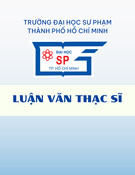

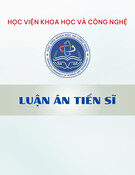


![Luận văn Thạc sĩ: Tổng hợp và đánh giá hoạt tính chống ung thư của hợp chất lai chứa tetrahydro-β-carboline và imidazo[1,5-a]pyridine](https://cdn.tailieu.vn/images/document/thumbnail/2025/20250807/kimphuong1001/135x160/50321754536913.jpg)




